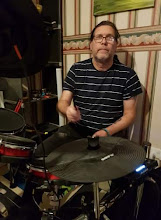Edward Delaney sent the following information concerning the two pictures we were referring to throughout the show:
Notes for photos:
1. The spiral galaxy photo is of the Andromeda Nebula ( M31 in the Catalogue of Messier) and is our nearest neighbouring galaxy. Notable, also, because it is the only such object which can be seen with the naked eye as a hazy blob (the bright center) near the Square of Pegasus in the night sky, everything else being within our Galaxy. The spiral structure only becomes visible with long exposure photos from powerful telescopes. It is larger than our Milky Way Galaxy but, is of similar structure and shows what our Galaxy would look like from the same distance outwards. Andromeda’s celestial motion is towards our Galaxy.
2. This photo is a montage of four images of NGC(New Galactic Catalogue) 7603 recorded as a “peculiar Galaxy” in the “Atlas of Peculiar Galaxies” by Halton C. Arp (California Institute of Technology) 1966. The upper left image is enhanced for luminosity in order to show two fainter objects(2 & 3) situated in the filimentary trail connecting to the main Galaxy (larger object).
The reason it is important is that the smaller objects marked (1,2 & 3) show greater red-shifts, that is motion receding from our part of space, than the larger Galaxy they are connected to, thus contradicting the theory of the expanding Universe known as “Big Bang Theory”. The top right and bottom left images are photos of the normal optical image as seen in the telescope and the bottom left image is a negative of the optical images. The smaller objects are known as QSO’s – Quasi Stellar Objects and seem to be massive conglomerations of matter ejected at some time from the main Galaxy and still connected to it by the wispy “tails” seen in the images. Professor Arp was prevented from doing further research by CalTech directors and eventually left the USA to work at the Max Planck Astrophysics Institute in Munich.
Subscribe to:
Post Comments (Atom)






No comments:
Post a Comment